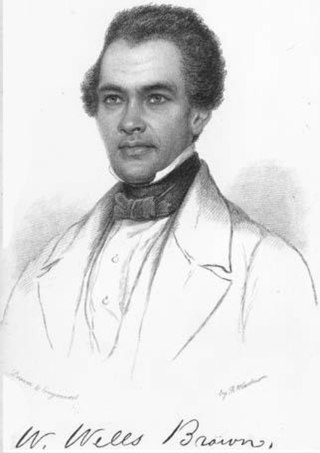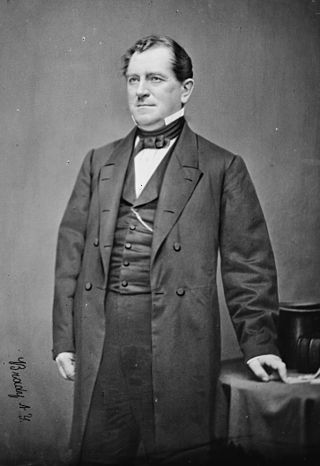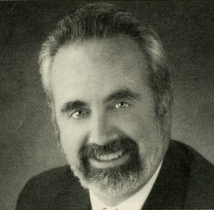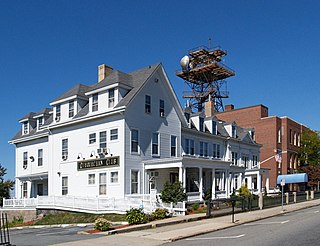Related Research Articles

Abolitionism, or the abolitionist movement, is the movement to end slavery and liberate slaves around the world.

New Bedford is a city in Bristol County, Massachusetts, United States. It is located on the Acushnet River in what is known as the South Coast region. Up through the 17th century, the area was the territory of the Wampanoag Native American people. English colonists bought the land on which New Bedford would later be built from the Wampanoag in 1652, and the original colonial settlement that would later become the city was founded by English Quakers in the late 17th century. The town of New Bedford itself was officially incorporated in 1787.

William Wells Brown was an American abolitionist, novelist, playwright, and historian. Born into slavery near Mount Sterling, Kentucky, Brown escaped to Ohio in 1834 at the age of 19. He settled in Boston, Massachusetts, where he worked for abolitionist causes and became a prolific writer. While working for abolition, Brown also supported causes including: temperance, women's suffrage, pacifism, prison reform, and an anti-tobacco movement. His novel Clotel (1853), considered the first novel written by an African American, was published in London, England, where he resided at the time; it was later published in the United States.

Joshua Reed Giddings was an American attorney, politician and a prominent opponent of slavery. He represented Northeast Ohio in the U.S. House of Representatives from 1838 to 1859. He was at first a member of the Whig Party and was later a Republican, helping found the party.

Paul Cuffe, also known as Paul Cuffee was an African American businessman, whaler and abolitionist. Born free into a multiracial family on Cuttyhunk Island, Massachusetts, Cuffe became a successful merchant and sea captain. His mother, Ruth Moses, was a Wampanoag from Harwich, Cape Cod and his father an Ashanti captured as a child in West Africa and sold into slavery in Newport about 1720. In the mid-1740s, his father was manumitted by his Quaker owner, John Slocum. His parents married in 1747 in Dartmouth.

George Nixon Briggs was an American lawyer and politician from Massachusetts. A Whig, Briggs served for twelve years in the United States House of Representatives, and served seven one-year terms as the 19th Governor of Massachusetts, from 1844 to 1851.

Mark A. Howland is a former representative to the Massachusetts General Court from New Bedford, Massachusetts.

Henry Howland Crapo was a businessman and politician who was the 14th governor of Michigan from 1865 to 1869, during the end of the American Civil War and the beginning of Reconstruction.

William Wallace Crapo was a member of the United States House of Representatives from Massachusetts. He was elected to fill the vacancy caused by the death of James Buffinton. He served slightly more than three terms in congress from November 2, 1875 to March 3, 1883

Nathaniel Cannon Smith (1866–1943), professionally known as Nat. C. Smith, was an American painter and architect of New Bedford, Massachusetts.
The following is a timeline of the history of New Bedford, Massachusetts, United States.
The United States Customs District of New Bedford was an administrative area for the collection of import duties on foreign goods that entered the United States by ship at the port of New Bedford, Massachusetts. Established in 1789, it ceased to be an independent district in 1913, but continues to operate as a port of entry.

Mary Hayley was an English businesswoman. She parlayed an inheritance from her first husband into a sizeable estate with her second husband. Upon the latter's death, she took over the business and successfully operated a shipping firm from 1781 to 1792 before living out her life in Bath.
The 1854 Massachusetts gubernatorial election was held on November 15. American Party candidate Henry J. Gardner was elected to his first term as governor, defeating incumbent Whig Governor Emory Washburn.

Amelia Piper (1796–1856) was a former slave and abolitionist, who organized anti-slavery fairs, was a manager of the New Bedford Female Union Society, and was a fundraiser for the abolition of slavery. She and her husband were conductors on the Underground Railroad. She worked within the African-American community and the greater New Bedford, Massachusetts community to coordinate the efforts of others to provide lives of freedom to those who had been enslaved.

Abolitionism in New Bedford, Massachusetts, began with the opposition to slavery voiced by Quakers during the late 1820s, followed by African Americans forming the antislavery group New Bedford Union Society in 1833, and an integrated group of abolitionists forming the New Bedford Anti-Slavery Society a year later. During the era New Bedford, Massachusetts, gained a reputation as a safe haven for fugitive slaves seeking freedom. Located on the East Coast of the United States, the town was becoming the "whaling capital of the world", where ships frequently returned to port, operated by crews of diverse backgrounds, languages, and ethnicity. This made it easy for fugitive slaves to "mix in" with crew members. The whaling and shipping industries were also uniquely open to people of color.

Abolition Row is a neighborhood in New Bedford, Massachusetts. A number of the families that founded the town of New Bedford lived on Sixth and Seventh Streets and were active members of the Abolition movement in New Bedford. They also represent the whaling industry employers who employed a diverse workforce. It is located near the New Bedford Whaling National Historical Park.

New Bedford Friends Meeting House, also known as New Bedford Friends Meeting, is a Quaker house of worship in New Bedford, Massachusetts. This meeting house has since 1822 been the home to the New Bedford Meeting of the Religious Society of Friends (Quakers); the meeting meets every Sunday at 10:00 a.m.
Nathan Johnson was an African-American abolitionist who sheltered fugitive slaves, most notably Frederick Douglass, and was a successful businessman in New Bedford, Massachusetts. He married Mary Durfee, nicknamed Polly, who was his business partner in their confectionery and catering businesses. In 1849, Nathan followed the Gold Rush to California. Polly died in 1871 and Nathan returned after her death and was a beneficiary of her estate.

Charles Waln Morgan was a whaling industry executive, banker and businessman. At his peak in the whaling industry, he owned fourteen whaling ships, one of which was named after him, the Charles W. Morgan. It became a National Historic Landmark. He sold the sperm oil that came from his ships, and also used it in his candle-making factory.
References
- 1 2 Journal of the House of Representatives of the Commonwealth of Massachusetts. 1870. Retrieved May 28, 2015.
- 1 2 The New England Historical & Genealogical Register: Volume XXII. The New England Historical & Genealogical Society. 1868. Retrieved May 29, 2015.
- 1 2 3 4 5 6 7 8 Grover, Kathryn (2001). The Fugitive's Gibraltar: Escaping Slaves and Abolitionism in New Bedford, Massachusetts. Amherst: University of Massachusetts Press. ISBN 9781558492714 . Retrieved May 28, 2015.
- ↑ The New-Bedford Directory. 1836. Retrieved May 28, 2015.
- ↑ Finkelman, Paul (2006). Encyclopedia of African American History, 1619-1895: From the Colonial Period to the Age of Frederick Douglass. New York: Oxford University Press. ISBN 9780195167771 . Retrieved May 28, 2015.
- ↑ Pease, Zephaniah W., ed. (1918). "XXVI". History of New Bedford, Volume 3. New York: The Lewis Historical Publishing Company. pp. 267–270. Retrieved May 28, 2015.
- ↑ Pease, Zephaniah W., ed. (1918). "XXXV". History of New Bedford, Volume 3. New York: The Lewis Historical Publishing Company. p. 188. Retrieved May 28, 2015.
- 1 2 3 4 5 Mulderink III, Earl F. (2012). New Bedford's Civil War. Fordham University Press. ISBN 9780823243341 . Retrieved May 28, 2015.
- ↑ Snodgrass, Mary Ellen (2015). The Underground Railroad: An Encyclopedia of People, Places, and Operations. Routledge. ISBN 9781317454168.
- 1 2 Pease, Zephaniah W., ed. (1918). "XXVII". History of New Bedford, Volume 3. New York: The Lewis Historical Publishing Company. p. 192. Retrieved May 28, 2015.
- 1 2 3 4 5 6 7 Pease, Zephaniah W., ed. (1918). "XXXVI". History of New Bedford, Volume 3. New York: The Lewis Historical Publishing Company. p. 276. Retrieved May 28, 2015.
- 1 2 3 4 5 Dubin, Michael J. (March 1, 1998). United States Congressional Elections, 1788-1997: The Official Results of the Elections of the 1st Through 105th Congresses. McFarland and Company. ISBN 978-0786402830.
- ↑ Druett, Joan (2001). Petticoat Whalers: Whaling Wives at Sea, 1820-1920. UPNE. ISBN 978-1-58465-159-8.
- ↑ Boss, Judith A.; Thomas, Joseph D. (1983). New Bedford, a Pictorial History. Donning Company.
- ↑ Spears, John R. (1908). The Story of the New England Whalers. New York: The MacMillan Company. p. 392 . Retrieved May 28, 2015.
- ↑ Pease, Zephaniah W., ed. (1918). "XLIV". History of New Bedford, Volume 3. New York: The Lewis Historical Publishing Company. p. 352. Retrieved May 28, 2015.
- ↑ Fossett, Frank (1876). Colorado: A Historical, Descriptive and Statistical Work on the Rocky Mountain Gold and Silver Mining Region. 1876: Daily Tribune Steam Printing House. p. 239 . Retrieved May 28, 2015.
{{cite book}}: CS1 maint: location (link) - ↑ Reunion of the Free Soilers of 1848. Free Soil Party (Mass). 1877. Retrieved May 29, 2015.
- ↑ Pease, Zephaniah W., ed. (1918). "XXXI". History of New Bedford, Volume 3. New York: The Lewis Historical Publishing Company. p. 241. Retrieved May 28, 2015.